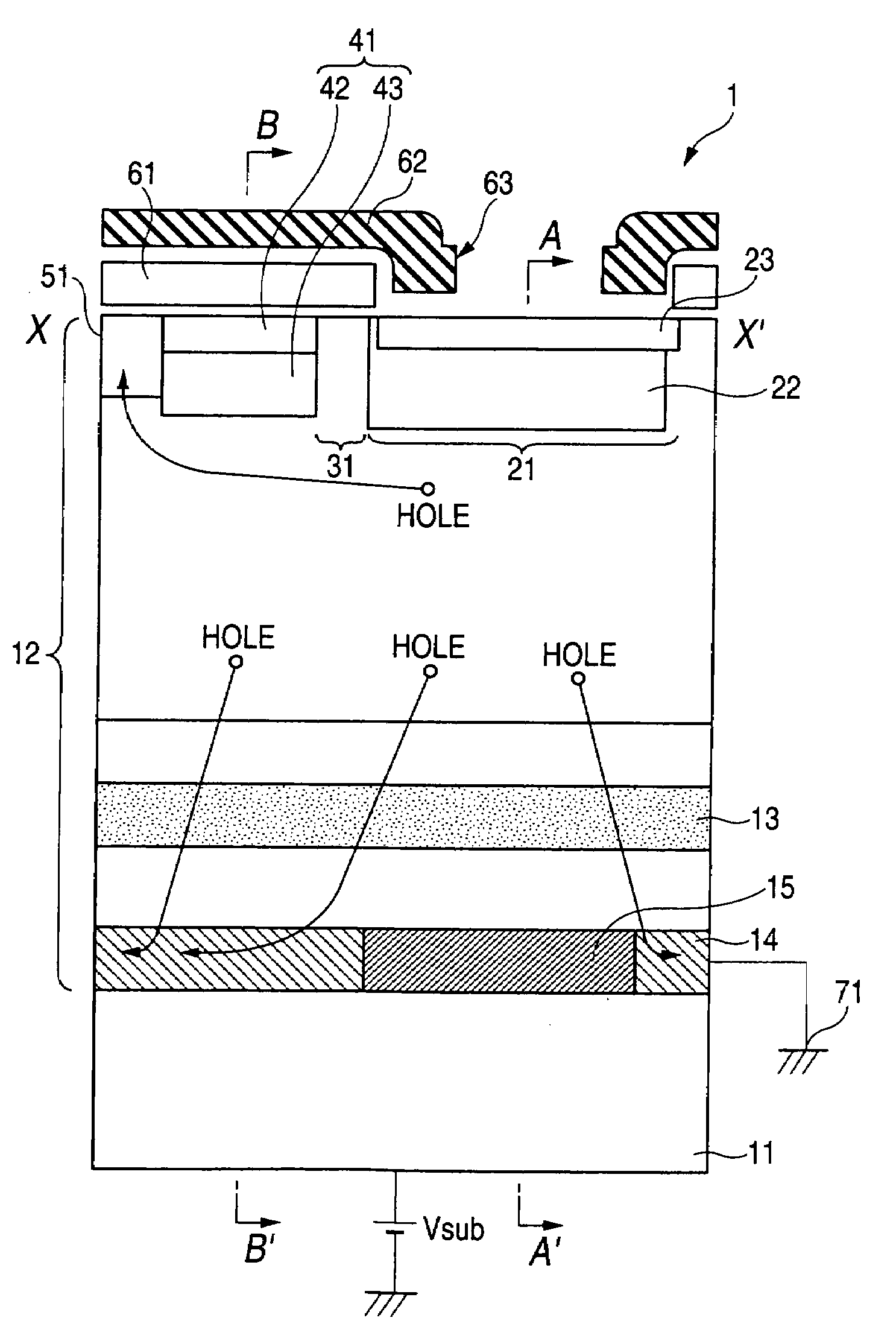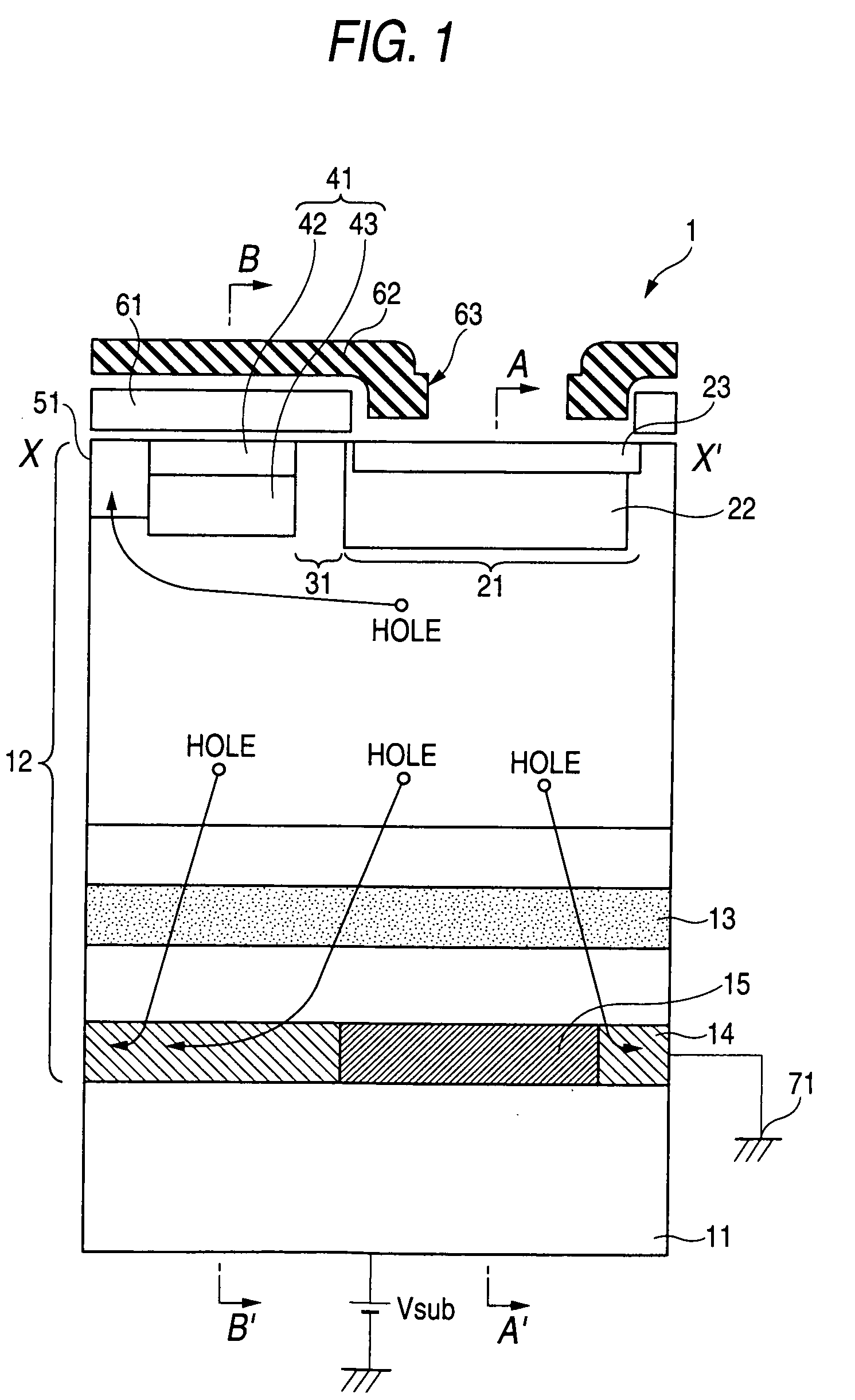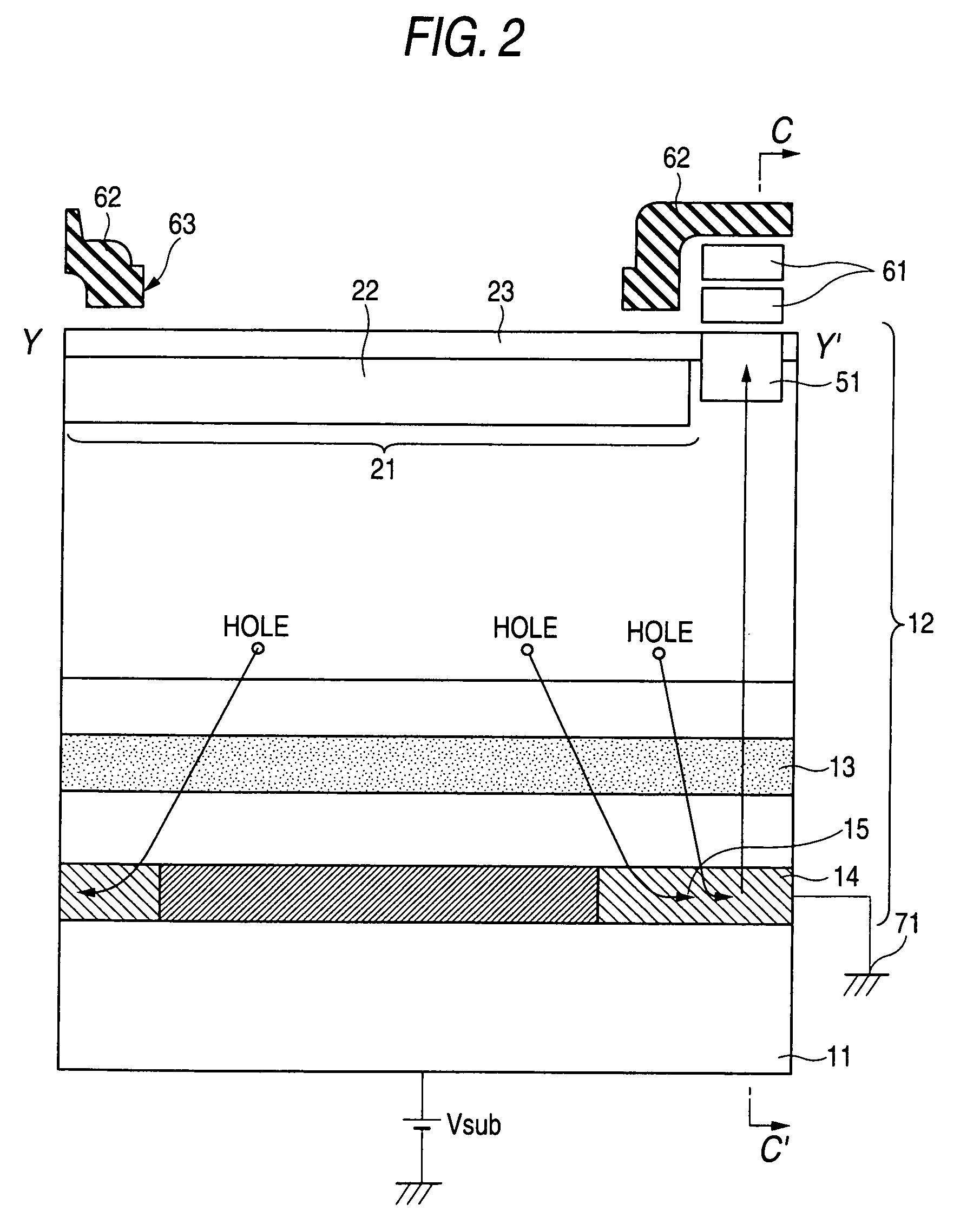Solid state imaging device and imaging apparatus
- Summary
- Abstract
- Description
- Claims
- Application Information
AI Technical Summary
Benefits of technology
Problems solved by technology
Method used
Image
Examples
first embodiment
[0037]A solid state imaging device according to an embodiment (first embodiment) of the invention will be described with reference to cross sections shown in FIGS. 1, 2 and 3 and plan layout diagrams shown in FIGS. 4 and 5. Moreover, FIG. 1 shows a diagram depicting an X-X′ schematic cross section in FIG. 4, and FIG. 2 shows a diagram depicting a Y-Y′ schematic cross section in FIG. 4.
[0038]In addition, FIGS. 1, 2, and 4 show a diagram schematically depicting the vicinity of a single light receiving pixel among a plurality of light receiving pixels provided in an image area of a solid state imaging device according to the embodiment of the invention. FIG. 3 shows a cross section depicting the schematic configuration of the vicinity of a ground part provided on the outer part of the image area of the solid state imaging device according to the embodiment of the invention. FIG. 5 shows a layout diagram schematically depicting the image area of the solid state imaging device and the vi...
second embodiment
[0073]Next, a solid state imaging device according to the invention will be described with reference to a cross section depicting the schematic configuration shown in FIG. 8.
[0074]As shown in FIG. 8, a solid state imaging device 2 is provided with a first conductive type (N-type) area 18 between the second well region 14 and the semiconductor substrate 11 in the solid state imaging device 1, the area 18 that has a concentration high enough to cancel the striation of a silicon substrate. Preferably, the concentration of the first conductive type region 18 (the concentration of the N-type impurity such as As or P) is about 2.0×1016 cm−3 to 5.0×1017 cm−3. For example, the first conductive type region 18 is formed in which an N-type impurity is ion injected into the semiconductor substrate 11. Although it is necessary to form the first conductive type region 18 at a deep position 6 μm or deeper from the surface of the light receiving area 23, it is difficult to form the area at a deep p...
PUM
 Login to View More
Login to View More Abstract
Description
Claims
Application Information
 Login to View More
Login to View More - R&D Engineer
- R&D Manager
- IP Professional
- Industry Leading Data Capabilities
- Powerful AI technology
- Patent DNA Extraction
Browse by: Latest US Patents, China's latest patents, Technical Efficacy Thesaurus, Application Domain, Technology Topic, Popular Technical Reports.
© 2024 PatSnap. All rights reserved.Legal|Privacy policy|Modern Slavery Act Transparency Statement|Sitemap|About US| Contact US: help@patsnap.com










